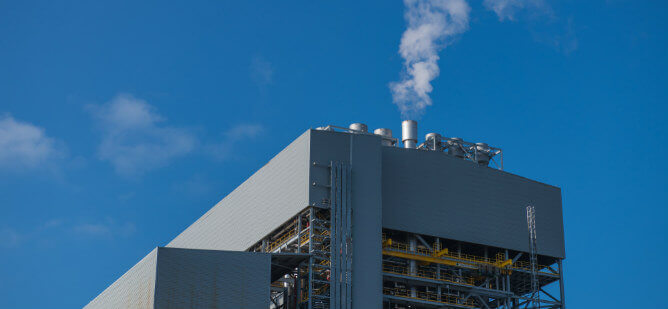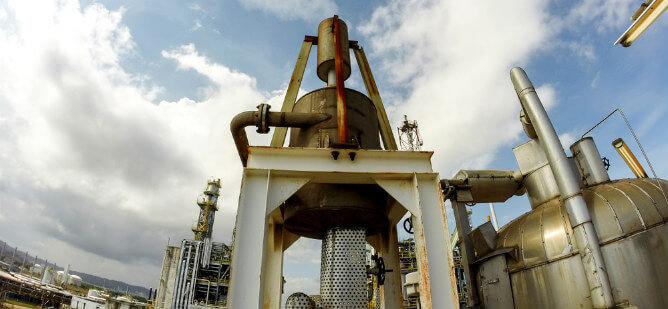
Atmospheric Vent Silencers for Reducing Pipeline Noise
Noise pollution from industrial activities is a major concern for operators and environmental regulatory agencies alike. In the U.S., environmental regulatory agencies such as the National Institute for Occupational Safety and Health (NIOSH) specify a maximum emitted decibel level to be maintained during industrial processes to prevent noise-induced hearing loss. Thus, management must take active steps to reduce the noise levels at their facilities.
During operations discharging compressed fluids such as natural gas or steam from pipelines, the noise generated can be significant if an atmospheric vent silencer is not installed. The noise generated during venting operations is due to rapid fluid expansion or turbulence in the system and escapes into the environment via the open stack exit.
This article will discuss what these devices are, outline some common applications, and aid management to choose the most suitable device for their industrial operations.
What Are Atmospheric Vent Silencers?
An atmospheric vent silencer (also called a blow-off silencer) is a device used to reduce excessive noise emitted from compressed fluids (such as nitrogen, natural gas, oxygen, and CO2) being vented into the atmosphere from a pipeline. Steam vent silencers lower noise levels produced from venting steam at high velocity and pressures.
Vent silencers consist of acoustic cylinders housed in a steel casing capped at one end and exposed to the atmosphere at the other. They are usually installed at the upstream or discharge valve of the pipeline – at the point where noise would otherwise escape into the environment. Common materials of construction include high-purity carbon and stainless steel.
Noise level reduction can be achieved by diffusing the sound using an expansion system and then absorbing the sound frequencies using a dissipative system. Fluid enters the silencer via an inlet (reactive component) which reduces the sound pressure and passes into an acoustic packing system (dissipative component) which absorbs most of the sound energy. After acoustic attenuation and absorption, the sound output is considerably lower and can meet regulatory constraints.
Vent Silencer Applications
Atmospheric vent silencers can be utilized in industries that carry out periodic, high-pressure fluid venting and blow-down operations. The devices can be installed on equipment such as fittings, safety valves, pressure relief valves, startup valves, control valves, blow down tanks, and ejectors. Some important industrial applications include Liquefied Natural Gas (LNG) regasification plants, Heat Recovery Steam Generators (HRSGs), boilers, petrochemicals refining, etc.
How to Choose a Vent Silencer

Regardless of your application, you can find a vent silencer to attenuate the noise to a reasonable and regulatory-approved level. However, there are some essential data points you must consider before choosing a particular device, such as:
- Nature of the fluid being vented
- Desired operation: Intermittent or continuous?
- Valve pressures
- Pressure drops / Back pressures
- Fluid temperature limits
- Maximum and ideal fluid flow rates
- Material specifications
- Vent silencer elevation
- The diameter of the pipeline
- Targeted maximum noise level for regulatory compliance
NiGen pipeline maintenance services provide expert guidance for choosing the ideal vent silencer for all kinds of industrial operations.
Sizing
The adequate size of vent silencer to be installed will depend on factors such as the fluid stream flow parameters obtainable at the facility, the type of fluid being vented through the pipeline, and the targeted noise level limits for local compliance. The most important dimensions are the outer diameter (mm), length (mm), and weight (kg).
The diameter of the silencer must be large enough to accommodate the fluid flow rate without damaging the acoustic packing system and compact enough to inhibit the sound energy being produced without permitting any significant noise to escape. The device should also be of an ideal length and weight. Choosing the right vent silencer will ensure maximum operational efficiency, durability, and cost savings.
NiGen boasts a wide selection of atmospheric vent silencers suitable for any kind of operation which ensures compliance with local industrial noise regulations. We also offer industrial air dryer rentals for air compression and storage and on-demand gas generation.
Design and Installation
Vent silencer design is an expert’s job. As such, it must be carried out by experienced/competent professionals. Efficient steam silencer design will reduce the noise level in industries that vent steam and other high-temperature fluids.
After a suitably sized device has been selected, it is installed at the pipeline purge outlets where fluid expansion takes place. Depending on the nature of the fluid to be vented, pressure and temperature conditions and a client’s assets structure, the vent silencers may be installed as flanged or welded connections.
Contact NiGen for Your Vent Silencing Needs
Reducing the noise level at your organization is critical to safeguard the health and safety of your employees and ensure compliance with regulatory standards.
Our experts at NiGen can advise on the most suitable vent silencer for your application and budget, provide the ideal steam silencer design or natural gas silencer design for your application and carry out a full-service installation.
For more information on our products and services, call us today at 713-956-8022 or request a quote online.
